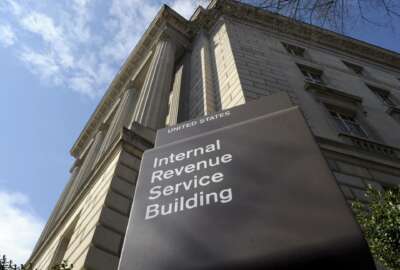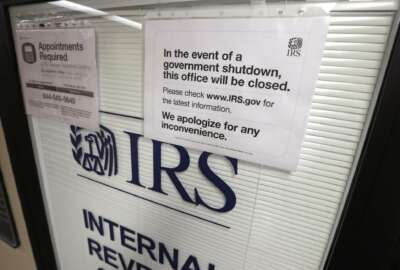The IRS, amid negotiations between Congress and the Biden administration to significantly increase its budget, is gearing up for a hiring surge and laying the foundation to retrain the workforce it already has.
The agency is hosting a series of training strategy industry days in August, outlining to vendors its requirements under the 2019 Taxpayer First Act, including plans to stand up an IRS University training concept.
The IRS, in a report to Congress in January, said it modeled the IRS University concept after corporate universities in the private sector, and would focus on a “blended learned model” that will combine in-person and virtual training.
The IRS will hold separate industry days for education and technology vendors that already have federal contracting experience, and vendors who are new to the federal marketplace. The agency will also hold a session for colleges and universities, as well as federal agencies with teaching programs.
“This event is intended to raise awareness of technology and skills that will be needed to implement the IRS training strategy,” the agency wrote in an announcement to industry.
IRS will initially focus on four academies focused on taxpayer service, tax administration, IT and operations management, and leadership development. Through its multi-year training plan, the IRS says it will avoid scheduling training sessions during peak workload periods.
Overcoming a ‘crunch in talent’
Early in the appropriations planning for fiscal 2022, lawmakers have supported the Biden administration’s plan for a long-term investment in the IRS to help shrink a growing tax gap.
The House Appropriations subcommittee on financial services and general government approved a spending bill in June that would give the IRS a $13.6 billion budget in fiscal 2022 — more than a 14% increase from current spending levels.
A bipartisan group of lawmakers negotiating with the White House, meanwhile, have proposed giving the IRS $40 billion over 10 years to make up for a decade of budget and workforce cuts, as part of the Biden administration’s infrastructure spending package.
But the IRS will need more than just a higher annual budget to reverse a decade of budget and workforce cuts.
Chad Hooper, executive director of the Professional Managers Association, said the IRS will need multi-year funding to pull off the long-term hiring and IT modernization efforts that are foundational to its recovery from years of decline, and would enable more efficient contracting to support these initiatives.
“We feel, the president feels, the IRS commissioner feels that the IRS’ funding should not be subject to the political whims of the annual appropriations process. It does need, if not all, then a great deal of its appropriations to be protected in a multi-year budget. This would allow the IRS the flexibility to undertake a large-scale, multi-year initiative with some certainty,” Hooper said.
IRS Commissioner Chuck Rettig has explicitly requested multi-year funding from Congress, as well as direct hiring authority to expedite the hiring process. Rettig told lawmakers that he’s planning to add 5,000 enforcement personnel to the agency’s ranks.
But the IRS in recent years has been unable to keep pace with its projected hiring, causing mission-critical positions to go unfilled. National Taxpayer Advocate Erin Collins, in her annual report to Congress, warned that the IRS failed to hire more than 5,000 full-time employees it planned to bring onboard between fiscal 2017 and 2019, despite allocating funding for this workforce increase.
Collins warned that the IRS human resources office, faced with its own staffing shortage, may not have the resources needed to bring a large influx of new hires into the agency.
“I believe the members of my association, these federal managers, are certainly wanting to skill up, and they are certainly capable of bringing people on. But all of the things that happen to get security clearances, to get people through the HR process, all of that is not necessarily on great standing right now,” Hooper said. “It takes the IRS a very long time to even fill a position internally right now, and so we definitely would need to make some improvements to be able to do these large-scale sorts of hires,” Hooper said.
Hooper said the IRS faces a “crunch in talent,” and the IRS workforce is older than the rest of the civil service. Rettig told Congress he expects 52,000 employees will leave the agency over the next six years.
While Congress remains in the early stages of crafting a spending bill for fiscal 2022, Hooper warned that a continuing resolution in the fall would be “fatal” to the hiring initiative. Under a CR, Hooper said the IRS goes into a “holding pattern” where it can only hire mission-critical staff.
While the agency faces staffing shortages across nearly all of its operations, Hooper said the agency’s most urgent need is for revenue agents and officers experienced with handling complex, international financial corporations, as well as criminal investigators.
Increasing enforcement, however, will create a spillover effect, in which more taxpayers file appeals, which then increases the need for more settlement officers. Hooper estimated the agency right now only has about 800 settlement officers.
“If we ramp up audits, then we’ll have appellate cases. If we falter in appeals, or the taxpayer wants to take it further, then that goes to tax court, then it’s a question of is the administrative tax court funded appropriately so that taxpayers can get a hearing and have their day in court in a timely fashion,” Hooper said.
IRS rolls out child tax credit payments
The IRS workforce and training initiatives come as the agency continues to provide pandemic stimulus programs to the public. The IRS and the Treasury Department sent their first batch of child tax credit payments this week. The first wave totaled $15 billion and went out to 35 million households.
Under the American Rescue Plan, households are eligible to receive $300 per month for each child under age 6 and up to $250 per month for each child ages 6 through 17.
The IRS stood up a portal for individuals to opt-in or out of the program, but the IRS doesn’t receive any real-time info on employment or income beyond annual tax filings. Hooper said the IRS and taxpayers face challenges, such as how divorced parents with shared custody receive the credit.
“When people go to file in April, if they received this money for the child tax credit and they were not supposed to have received it, they will have to pay it back at tax time, and that surprise is not something we want for our taxpayers,” Hooper said.
Hooper said Congress could mitigate these problems by allowing the IRS to partner with state governments, which receive at least quarterly updates on residents’ employment status and would allow the IRS to significantly reduce improper payments.
“These custody controversies are a constant source of improper payments and other tax issues, and they contribute to a widening tax gap,” he added.
Hooper said multi-year funding would also help the agency make progress on a six-year IT modernization effort. Rettig warned Congress that the project is falling behind schedule because of a lack of funding.
Hooper said about 70% of IT dollars go toward maintaining legacy systems because they are increasingly antiquated. The taxpayer database at the core of IRS operations will turn 60 years old in 2022.
Copyright
© 2024 Federal News Network. All rights reserved. This website is not intended for users located within the European Economic Area.





